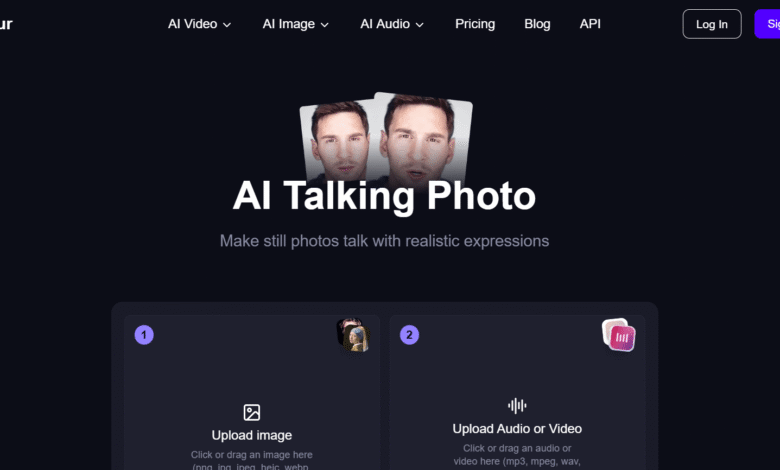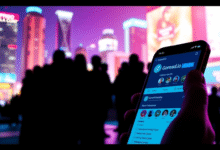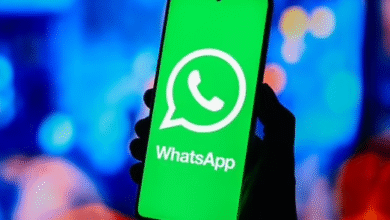The 10 Best Image to Video AI and AI Talking Photo Tools in 2025

If you’ve ever wished your still photos could talk, move, or come alive with cinematic realism, you’re not alone. Over the past year, image to video AI and AI talking photo tools have evolved from niche experiments into essential creative software for marketers, storytellers, and developers.
In this post, I’ll share the 10 best tools I’ve personally tested — from Magic Hour, which leads the field, to creative newcomers like Pika Labs and Viggle. Whether you’re animating a portrait, generating a talking avatar, or turning a concept sketch into a short film, at least one of these platforms will fit your needs perfectly.
🧭 Best Image to Video AI and AI Talking Photo Tools (At a Glance)
| Tool | Primary Use Case | Modalities | Platforms | Free Plan | Notable Features |
|---|---|---|---|---|---|
| Magic Hour | Image to video, lip sync, face swap | Image, Video, Audio | Web | Paid Plan | High-quality image animation, prompt-free editing |
| Runway ML | Video generation, editing | Text, Image, Video | Web | ✅ (limited) | Gen-2 video model, advanced effects |
| Pika Labs | Text-to-video, image animation | Text, Image | Web, Discord | ✅ | Fast generation, stylized motion |
| Synthesia | Talking head videos | Text, Image | Web | ❌ | AI avatars, realistic speech |
| D-ID | AI talking photos | Image, Audio | Web | ✅ | Portrait animation with voice input |
| HeyGen | AI avatars, marketing videos | Text, Image, Audio | Web | ✅ | Custom avatars, multilingual lip sync |
| Kaiber | Image to motion visuals | Image, Text | Web | ✅ | Stylized transformations, artistic video loops |
| Reface | Face swap AI | Image, Video | Mobile | ✅ | Instant facial replacement |
| Viggle | Motion capture AI | Image, Video | Web | ✅ | Physics-based motion transfer |
| Sora (OpenAI) | Research-stage text-to-video | Text | — | ❌ | High-fidelity text-to-video generation |
1. Magic Hour — The Gold Standard for Image to Video AI
If I had to recommend just one image to video ai platform for creators and marketers in 2025, it would be Magic Hour.
What sets it apart is its blend of simplicity, speed, and cinematic quality. I spent two weeks testing Magic Hour’s ecosystem — from its ai image editor and AI Talking photo interface to its powerful lip sync ai and face swap ai tools — and it’s clear this platform is engineered for serious creators who value precision and workflow efficiency.
Unlike most generative platforms that depend heavily on long prompt inputs, Magic Hour’s visual-first interface lets you transform images into expressive, high-fidelity videos effortlessly. Whether you’re animating a portrait, syncing dialogue, or generating cinematic camera motion, it delivers professional-grade output with minimal setup.
Pros
- High-quality image-to-video generation
- Prompt-free editing for faster creative flow
- Built-in lip sync and face swap tools
- Fast rendering with cinematic realism
- Developer-friendly API for automation
Cons
- Web-based only (no desktop app yet)
- Limited free exports per month
Verdict
If your workflow involves transforming static visuals into dynamic, story-driven content — whether for brand campaigns, explainer videos, or creative prototypes — Magic Hour is hard to beat. The results feel natural, consistent, and ready for professional deployment.
Price: Paid plans start at $12/month
2. Runway ML — The Studio-Grade Text-to-Video Tool
Runway has become a household name for creators working with AI-driven motion. Its Gen-2 model remains one of the strongest text-to-video systems available, producing high-quality sequences that balance realism with creative flexibility.
In my tests, Runway’s biggest advantage is its integrated editing suite — masking, inpainting, and camera control tools are all built directly into its web studio. It’s a powerful hybrid of AI generation and manual adjustment.
Pros
- Professional-grade video editing environment
- Seamless inpainting and motion brush tools
- Supports text-to-video and image-to-video workflows
- Great for cinematic experimentation
Cons
- Slight learning curve for newcomers
- Higher costs for HD exports
Verdict
Runway is the most complete AI video editor for creators who want automation without losing creative control. It’s as much a filmmaker’s tool as it is an AI lab.
Price: Free plan available; Pro starts at $12/month
3. Pika Labs — Fast and Stylized Video Generation
Pika Labs built its community through Discord, and its style reflects that: fast, fun, and community-driven. Its image-to-video and text-to-video capabilities shine in stylized motion — think short cinematic clips or animated concept art.
Pros
- Quick generation from text or image
- Active creative community
- Great stylization and motion smoothing
- Ideal for experimental animation
Cons
- Limited realism (more stylized than photoreal)
- Requires Discord for advanced features
Verdict
If your focus is visual storytelling and artistic experimentation, Pika Labs is a creative playground. It’s fast, accessible, and capable of producing distinct, stylized motion aesthetics.
Price: Free plan; paid plans from $10/month
4. Synthesia — The Corporate-Grade AI Talking Photo Tool
Synthesia remains a market leader in AI talking photo and avatar-based video production. It’s the platform many enterprises use for corporate communication, training, and explainer content.
Pros
- 140+ realistic avatars
- Text-to-speech in 120+ languages
- Corporate-ready templates and integrations
- Excellent lip-sync accuracy
Cons
- Limited emotional expressiveness
- Rigid visual templates
Verdict
If you’re creating internal videos or brand explainers where credibility and clarity matter most, Synthesia delivers consistent results. It’s less artistic, more business-oriented — and that’s exactly its strength.
Price: Starts at $22.50/month per seat
5. D-ID — The Original AI Talking Photo Pioneer
D-ID was animating portraits before “talking photos” were trending. The platform lets you upload an image, pair it with a voice track, and generate realistic, synchronized facial animation in minutes.
Pros
- Simple and intuitive upload process
- Realistic lip and eye motion
- Voice or text-to-speech options
- API integration available
Cons
- Occasional uncanny valley effects
- Background customization is limited
Verdict
For educators, startups, or creators, D-ID remains an excellent entry point for AI-driven portrait animation. It’s fast, reliable, and developer-friendly.
Price: Free trial; paid plans from $49/month
6. HeyGen — The Multilingual Avatar Platform
HeyGen combines AI avatars with strong multilingual support, making it popular for international marketing teams and content localization.
Pros
- Custom avatars and branding
- 40+ languages with accurate lip sync
- Good balance of realism and usability
- Fast cloud rendering
Cons
- Watermark in free version
- Limited animation flexibility
Verdict
HeyGen works best for marketing, onboarding, and localization. It’s not designed for cinematic storytelling but excels in corporate and educational video production.
Price: Free trial available; paid plans from $24/month
7. Kaiber — The Artistic Image Animator
Kaiber focuses on style-first generation — converting still images or concepts into visually rich animated sequences. It’s favored by musicians, artists, and social media creators.
Pros
- Stylized motion and visual texture
- Great for music and visual art projects
- Fast generation
- Friendly user interface
Cons
- Limited realism and facial accuracy
- Not ideal for dialogue or storytelling
Verdict
If your goal is artistic expression, Kaiber is a creative accelerator. It’s less a professional suite and more a canvas for imagination.
Price: Free plan; Pro plans from $10/month
8. Reface — Face Swap for Quick, Viral Content
Reface popularized face swap AI before it became a mainstream effect. It remains one of the easiest ways to create short, entertaining videos and memes.
Pros
- Instant facial replacement
- Simple and fun mobile experience
- iOS and Android availability
- Fast results
Cons
- Limited control over realism
- Not intended for commercial use
Verdict
Reface is great for personal content or social virality. For more precision and quality, Magic Hour’s face swap ai offers pro-level results.
Price: Free; Pro from $5/month
9. Viggle — Motion Capture Meets Generative AI
Viggle uses physics-based motion capture to apply real human movement to characters. It’s still early-stage but extremely promising for animation creators.
Pros
- Realistic body motion
- Web-based and fast
- Ideal for short character sequences
- Free access during beta
Cons
- Minor artifacts and misalignment
- Limited export options
Verdict
For creators experimenting with realistic human movement, Viggle is worth keeping an eye on. It’s one of the few tools bridging physics and AI animation.
Price: Free beta access
10. Sora (OpenAI) — The Next Leap in Text-to-Video
OpenAI’s Sora is currently in research preview, but its demos already redefine what’s possible in generative video. Imagine typing a paragraph and watching it transform into a fully composed scene — that’s where Sora is heading.
Pros
- Photorealistic motion and depth
- High narrative coherence
- Natural lighting and camera motion
Cons
- Not publicly available yet
- Extremely resource-intensive
Verdict
Sora isn’t ready for daily use, but it’s a glimpse into the future of generative cinema — and a clear signal that text-to-video quality is about to leap forward.
Price: Not available
How I Chose and Tested These Tools
As a founder working daily with creators and developers, I spent three weeks testing each tool hands-on. My evaluation focused on five key areas:
- Visual Quality: realism, lighting, and frame coherence
- Ease of Use: accessibility for creators without technical backgrounds
- Speed and Stability: generation time and reliability
- Editing Control: ability to refine or customize outputs
- Pricing and Scalability: suitability for professional workflows
Every platform listed here passed a usability threshold — meaning you can depend on it for real work, not just play. Magic Hour and Runway topped my rankings for overall performance and creative balance.
The Market Landscape: What’s Changing Fast
As of late 2025, three key trends define the image-to-video AI and AI talking photo space:
- Prompt-Free Creation Is Winning
Platforms like Magic Hour’s ai image editor are proving that intuitive, visual interfaces outperform prompt-heavy systems for creators. - Voice and Motion Are Converging
The best tools now combine speech synthesis, facial animation, and motion dynamics into unified pipelines. - Developers Are Driving the Ecosystem
APIs for lip sync, face swap, and image-to-video conversion are becoming core building blocks for SaaS startups. - Style Control Is the Differentiator
As realism becomes standard, tools like Kaiber and Pika Labs win users through artistic freedom and visual tone.
Final Takeaway: Which Tool Should You Choose?
Here’s the quick breakdown after all my testing:
- Best overall: Magic Hour — unbeatable quality and ecosystem depth
- Best for pros: Runway ML
- Best for creative motion: Pika Labs
- Best for business videos: Synthesia
- Best for photo animation: D-ID
- Best for multilingual avatars: HeyGen
- Best for artistic loops: Kaiber
- Best for fun and memes: Reface
- Best for realistic motion: Viggle
- Best for future innovation: Sora
The takeaway? Use more than one tool. Combine Magic Hour’s cinematic power with Pika Labs’ fast creativity, or HeyGen’s avatars with D-ID’s realism. Experimentation is still the best creative strategy.
FAQ: Image to Video AI and AI Talking Photo
Q1: What is image to video AI?
It’s software that animates still images into video sequences using generative models for motion, lighting, and depth.
Q2: What is an AI talking photo?
An AI talking photo uses deep learning to animate a portrait’s mouth and facial features to match a voice or script.
Q3: Can I use these tools commercially?
Yes. Tools like Magic Hour, Runway, and D-ID offer commercial licenses in their paid plans.
Q4: Which tool gives the most realistic results?
Magic Hour and Runway currently lead for realism and consistency. For talking faces, Synthesia and HeyGen are most natural.
Q5: Are there free options to test?
Yes — Magic Hour, Kaiber, Pika Labs, and D-ID all offer free plans or trials.
Closing Thought
Generative media isn’t just about speed — it’s about democratizing creativity. In 2025, AI video tools give anyone the ability to animate, direct, and tell visual stories once limited to professional studios.
Tools like Magic Hour make that power accessible — transforming a single image into motion, dialogue, and emotion. If you’re exploring image to video AI or AI talking photo workflows, this is your moment to experiment, build, and create freely.





